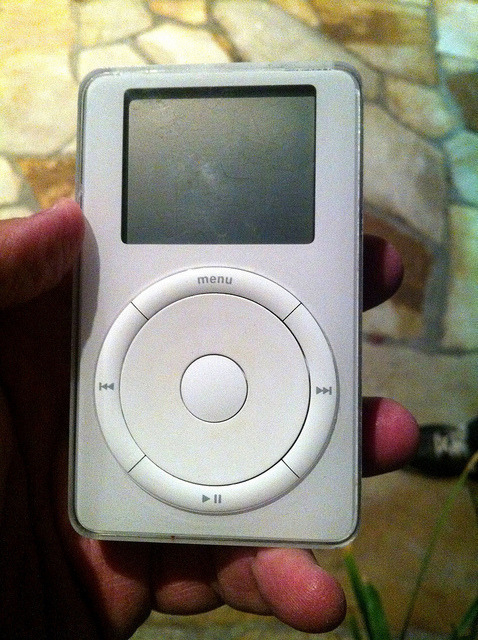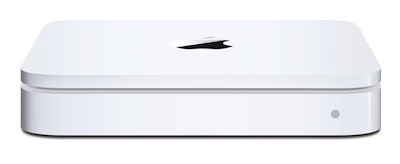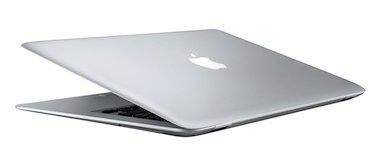PEBKAC: Staying Connected in Africa
This column originally appeared in the December 2011 issue of About This Particular Macintosh.
Greetings from Rwanda! As this issue goes to press, my wife and I are in the African republic finalizing the adoption of our third child. We’ve been here for two weeks, and have up to another week in Kenya to look forward to. (Procedural muckety-muck with US Immigration; not everything can be processed in Rwanda.)
Staying connected with back home and the larger world has been a challenge. We each brought our iPhones, but they’ve been locked in airplane mode since we boarded our initial flight out of Dallas. We checked with AT&T about using them internationally, but the costs of doing so were just too great. Thanks to a Facebook group devoted to adoption in Rwanda, we learned it was relatively cheap to buy a simple phone for texting and local calls. So we set our sights on doing that.
Our first full day in-country we performed our first currency exchange and immediately sought out one of the myriad cell phone sellers. And when I say myriad, that’s not an exaggeration. Take those half dozen or so cell phone kiosks you see at an average American mall and multiply it by a few hundred. Thousand. A few hundred thousand. (Okay, that may be an exaggeration, but it seems that every where you look there are booths or larger stores devoted to selling mobile phones.
Mobile is huge here, as it is in much of the developing world. A mobile infrastructure is much easier to build out than a wired one. Everyone here has a mobile phone. Not many people have a land line. Heck, even the Executive Secretary of the National Commission for Children (under the Office of the Prime Minister) has her mobile number on her business card. And that’s all. (And yes, this means that we do, in fact, have a business card from the Executive Secretary of the National Commission for Children.)
So, mobile phone acquired, along with two SIM cards, each with about nine US dollars worth of time and texting, total cost: US$35. Why two SIM cards? Turns out this no-name phone from China or Korea or wherever has two SIM slots. There are two mobile providers in Rwanda, the original MTN, and the relative newcomer, Tigo. It’s cheaper to call internationally, especially to the United States, on Tigo. Most everyone we’d be in contact with in Rwanda is on MTN. So the dual-SIM card capability would benefit us greatly. (An eight-minute phone call at 4 in the afternoon, Kigali, back to Dallas cost about 300 Rwandan francs, or 50 cents US.)
On every street corner, in every other empty space of a strip mall or building, there are men and women selling cards for time and data on MTN and Tigo, usually under yellow umbrellas of the former and purple umbrellas of the latter. They are fairly aggressive, but not obnoxiously so. They won’t hesitate to come up to ask if you need to buy, but back off quickly if you decline. It’s very cutthroat, however, as the percentage they receive from each card sold is their livelihood. They won’t hesitate, once a buyer has been identified, to try to sell over one another to earn that percentage. While we haven’t had to engage in an on-the-street purchase, our local attorney has, and it was interesting to watch.
So far as Internet access is concerned, we brought my 11-inch MacBook Air, plus an iPad 2, which has proven handy for watching US TV episodes previously downloaded when your only choices in the hotel room are Al Jazeera English and a sports channel that shows nothing but football (soccer, fellow Americans). Our hotel has Internet access in the room, usually served via wifi from a router mounted out in the hallway. Unfortunately, that wifi hasn’t worked since the day we moved in. Enter a wired connection and Mac OS X’s Internet Sharing feature.
Though I always carry a 25-foot Ethernet cable in my pack, I heartily accepted the hotel staff’s offer of a cable to plug in with. I consider the Apple Ethernet-to-USB adapter for the Air to be one of those “better to have and not need, than need and not have” pieces of kit, and it indeed saved our bacon. With the MacBook Air plugged in, it was off to the Sharing pane in System Preferences, and after turning on Internet Sharing, our iPad and iPhones could access the outside world over wifi. Problem solved!
Well, kind of.
Two days prior to the writing of this piece, our hotel’s connection went down about 8:00 PM local time. And has yet to resurface in our room, despite the tech sitting at the front desk, plugged in, forty-eight hours later. So while we were happily checking in on Twitter, Facebook, and e-mail in the mornings and evenings, that was no longer possible, wired connection or not.
So lunches and dinners have been spent at places with known free wifi, and the staff of two institutions now recognize us on sight. Just this evening, while eating steak kebabs and sambusas (local version of the meat-filled, deep-friend pastry), the Air was on the dining table, purchasing tickets through KLM’s web site for our flight to Kenya. (And zapping some spam from my e-mail inbox.)
So while staying in contact with our family back home, and with our friends around the world, hasn’t been as easy as back in Dallas, it has not been an insurmountable challenge, either. The people of Rwanda have been very friendly and accommodating, and we have, to a degree, fallen a little in love with our newest child’s homeland. We will certainly return in the years to come.
Fliers Still Must Turn Off Devices, but It's Not Clear Why - NYTimes.com
Fliers Still Must Turn Off Devices, but It's Not Clear Why - NYTimes.com
“According to the F.A.A., 712 million passengers flew within the United States in 2010. Let’s assume that just 1 percent of those passengers — about two people per Boeing 737, a conservative number — left a cellphone, e-reader or laptop turned on during takeoff or landing. That would mean seven million people on 11 million flights endangered the lives of their fellow passengers.“Yet, in 2010, no crashes were attributed to people using technology on a plane. None were in 2009. Or 2008, 2007 and so on. You get the point.
“Surely if electronic gadgets could bring down an airplane, you can be sure that the Department of Homeland Security and the Transportation Security Administration, which has a consuming fear of 3.5 ounces of hand lotion and gel shoe inserts, wouldn’t allow passengers to board a plane with an iPad or Kindle, for fear that they would be used by terrorists.”
And to add insult to injury: you can’t use your iPad during takeoff and landing, but United’s issuing iPads with flight procedures, manuals, and maps to its pilots.
Steve Jobs narrates The Crazy Ones - The Loop
Jobs&Woz with Apple1 (by MischaSprecher)
I sorta want the belt that Woz is wearing.
Somewhere, in a box, I have the signature of one of these gentlemen…
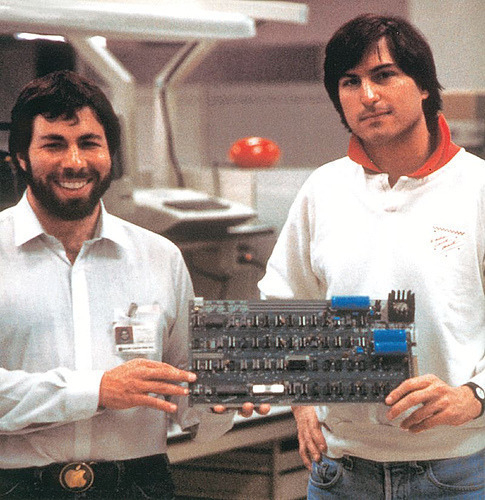
PEBKAC: Moving, and Moving On
This column originally appeared in the August issue of About This Particular Macintosh.
The past few weeks in our home have encapsulated the Great Room Reshuffle of 2011. My wife and I are in the process of adopting our third child (Boy2 is also adopted), and this is requiring some shuffling of resources. Our guest room will be no more so each boy may have his own room. New bedroom furniture has been ordered, and will be in place by the time, you, dear reader, are seeing these words.
Boy1 is remaining in the same room he’s been in since we got the original furniture, which is now in Boy2’s room. Boy1 is getting the aforementioned new furniture, including a desk, useful for doing homework and LEGO building. The new full bed ensures Boy2 or Boy3 can bunk with him when my parents come for a visit. (See above: guest room going away.) Boy3 will, at some point in the future, once we actually have Boy3, get new furniture, but for now his room remains semi-complete.
So now we’re at the third paragraph, you know way more about my home life than you ever wanted to, and you’re wondering what the heck this has to do with Macs, aren’t you?
Mac OS X Lion released a couple of weeks ago, and for a subset of users, shuffling installations was a concern. Just as we’re rearranging rooms, some found themselves moving to a clean drive partition to put the new operating system on. Most simply did an update install, which shuffles off the old Snow Leopard bits and moves the new Lion furniture in to the former’s place.
As of this writing, I’ve only installed Lion on one of our four Macs, my 11-inch MacBook Air. As more than one commentator has stated, Lion and the Air seem like a match made in heaven. Or Cupertino, as the case may be. I utilized the method most who upgraded to Lion have, the update-in-place. Snow Leopard is packed up, moved off the drive, and Lion is moved in and unpacked, everything put in its place.
It was time-consuming, but otherwise uneventful, much like the Great Room Reshuffle, which saw lots of sweating and grunting by yours truly as dressers and chests and beds were carried and slid about (yay for carpeting!), but no dented furniture, busted walls, or broken bones. Likewise, my moving on to Lion has only seen one hiccup, and that was the need for Java for Mac OS X 10.7 to be installed afterward so CrashPlan would work properly. Just a little sweating over my off-site, online backup, but no grunting this time.
Seasoned Mac veterans may take their time upgrading to Lion, and users of Quicken will most especially want to wait. (Though honestly, given Intuit’s lack of motivation thus far to update Quicken’s code, Quicken users may be better off looking for alternatives from committed developers.) Like many long-time Mac users, I’m not sure I’ll use the new Launchpad or Mission Control features, but I’m otherwise enjoying the many subtle changes Apple has made to OS X’s face. And as with previous Mac OS X updates on previous Macs, this latest operating system just feels faster on the same hardware.
Just as I’m glad we’re doing the Great Room Reshuffle of 2011, I’m happy so far with the Great Lion Upgrade of 2011. If you’ve been on the fence, and don’t have any application-compatibility issues, I encourage you to make the move to Mac OS X Lion. It’s the best Mac OS yet.
Apple’s vision for the future of computing versus Microsoft’s vision for the future of computing.
Any questions?
Looks about right to me.
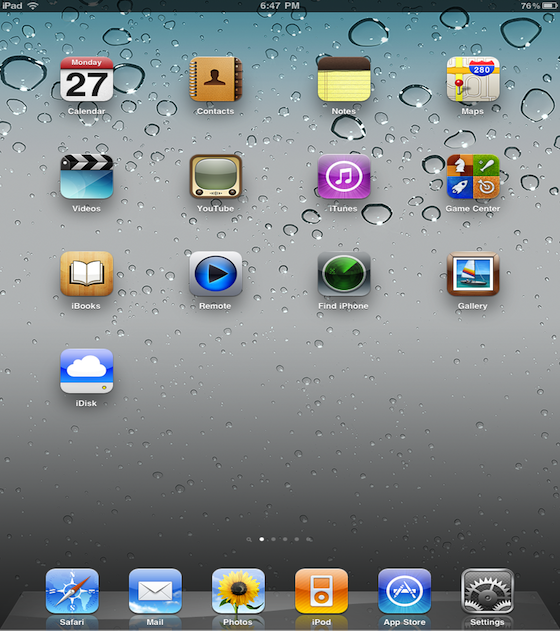
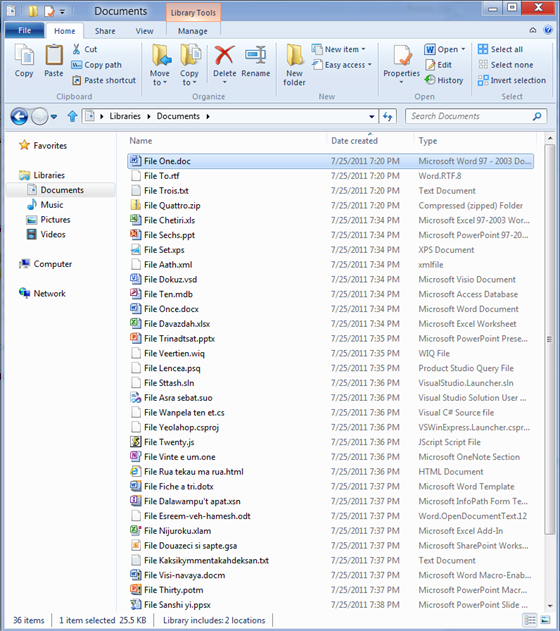
Selling PCs is not the business to be in, the margins are thin and the competition is abundant. Unless you are Apple there is no real way to differentiate one computer from the next and thus you must compete on price and blue LEDs.
[gallery]
New goodies on Flickr.
For the new 11-inch MacBook Air: backup drive, and the latest from Gary and the gang at Waterfield.
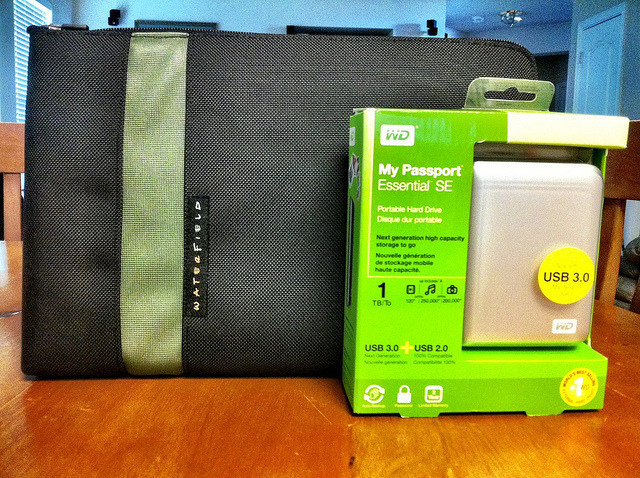
On the iPad
The iPad is to the handheld device market what the home theatre concept was to the marketers of TVs and related products. The Apple iPad provides an immersive experience that can't be rivaled by today's smartphones or netbooks. The revenue streams the iPad will create for app developers and publishers of content for consumer consumption may eventually dwarf the revenue to Apple from iPad hardware device sales. Further, due to the nature of the iTunes sales environment, Apple will be increasing the flow of dollars to its own coffers from distribution fees.
"I am on a mission"
The Secret Diary of Steve Jobs:
Will you write on a tablet, or just read from it? Or will you just buy it and put it on your desk and look at it a lot and never use it at all? Or will you maybe carry it around and put on the table in restaurants to show the other humanoids in your tribe that you are more advanced and wealthy than they are, and they should fear you because you have powerful magic that they do not understand? You see what I mean? What is the anthropology here? And what about the ergonomics? Can you mount it on a wall? Will it have a shiny surface so that Macolytes can adore themselves as they use it in public? (Yes. It must.) The tablet must look and feel not like something that was made by man -- it must feel otherworldly, as if God himself made it and handed it to you. I'm so glad Fake Steve came back.
You can still buy XP
If Windows Vista is giving you fits, you can still buy Windows XP from Amazon. (And put a little coin in my pocket if you use these links.) Windows XP Home Edition Windows XP Professional We used XP Professional on my wife's PC before it gave up the ghost, and, having used Vista on the Dell we bought to replace it, I sometimes wish we'd stuck with XP Pro. At least I spend the majority of my time in OS X...
Um, yeah
Expert Macintosh users who see "MacWorld" in an article know you don't know what you're talking about, just as most technology-literate readers would laugh at "MicroSoft," "QualComm," or "LexMark." Referring to a famous technology event without the correct name or spelling is a quick way to throw away your credibility. Saying "That's how I always thought it was spelled, and besides, everyone knew what I meant" is saying "I didn't bother to get the facts about my subject before I wrote my article." Don't be that writer.
The awkward kid
If any sufficiently advanced technology is indistinguishable from magic, Windows is that awkward kid that can't remember how the trick goes.
Differences
Every time there's a new OS release from MSFT they talk about the shortfalls of the current OS & how the new version will fix all problems.
Ever hear Apple dis a former version of their OS? Me neither. :)
There must have been a <em>lot</em> of holes
An Upstart Challenges the Big Web Browsers:
Browsers have always been viewed as crucial on-ramps to the Web. Nevertheless, after vanquishing Netscape, the first commercial browser developer, Microsoft waited five years before releasing the sixth version of Internet Explorer in 2006. Dean Hachamovitch, general manager of Microsoft’s Internet Explorer group, says the company was focused on plugging security holes during that time. [Emphasis added. --R]
Two immature little kids
"Engadget & Gizmodo are just two immature little kids attempting to reap the benefits of a journalistic profession neither truly understands." I couldn't agree more. And yet I still subscribe to their RSS feeds...
Macworld Keynote impressions
So the big news in the tech world yesterday was what Steve Jobs talked about during his keynote address at Macworld Expo in San Francisco. The annual technology conference geared toward the Mac OS, and all things Apple, Inc., is often used for the announcement of new products from my favorite fruit company. Yesterday was no exception. Here are some of my thoughts on what was announced: Time Capsule If I hadn't bought an Airport Extreme Base Station last year, to replace a router that died, I'd be buying a new 1 TB--yes, that's a T, for terabyte--Time Capsule right now. Merging an Airport Extreme Base Station with a "server-grade" hard drive, the Time Capsule allows for wireless backups from all of your Leopard-based Macs via Time Machine. Jobs called it a "back-up applicance".
Backing up your data is very important, and too few people do it, realizing the value of doing so only when it's too late. Time Capsule is a dead-simple way, for most people, to ensure their Macs are getting backed up. Plug in and power on the Time Capsule, open up Time Machine on your Mac and point it to the Capsule, and you're done. Time Capsule comes in two sizes, the 500 GB version for $299, and the aforementioned 1 TB version for $499. That's an amazing bargain, a terabyte of storage and a full wired/wireless router for five hundred smackers. As I said, if we didn't already have the AEBS router, my credit card would have already seen one of these charged to it. iPhone Update Today was the 200th day the iPhone had been available for purchase, and Apple's sold 4 million of them, an average of 20,000 iPhones sold per day. This means that in terms of United States smartphone market share, Apple has nearly 20% of the national smartphone market. The rumors of a 1.1.3 update to the iPhone proved to be true. The home screen can now be customized, and the Maps application--the underrated killer feature of the iPhone in my humble opinion--is now even more super-powered. The new Location feature in Maps is great. Combining data from Google and Skyhook Wireless, your iPhone can now, without GPS on board, triangulate your position within a couple of blocks. It pulled up my location at home with no problem. You can, finally, send a SMS message to more than one person, something my lowly Motorola v557 was capable of two years ago. The WebClips functionality is pretty neat; you can create a WebClip from any web page or portion of a web page and pop it on to your home screen, so it's easy to just go to Google, or The New York Times, or whatever web page you wish, with one touch. I've had quite some fun this afternoon playing with all of this new stuff, and it's almost like getting a new iPhone for free. All in all, it makes the iPhone an even better communication device. iTunes Movie Rentals In addition to buying movies through the iTunes Store, you can now rent them as well. Library movies (viz: older titles) are $2.99, and new releases are $3.99. From the time you click "Rent Movie" in the iTunes Store and it downloads, you have 30 days to watch the movie. From the time you click "Play" on the movie, you have 24 hours to watch it. You can also transfer the movie to another device, such as your iPod or iPhone, and watch it there as well, before your 24 hours or 30 days, depending on where you are when you perform the transfer, are up. The thirty days requirement is pretty decent, but I find the 24 hours one to be a little restrictive. It should be at least 48 hours, and 72 would be better, with 96 being the ideal. Going hand-in-hand with the new rental service is an updated Apple TV, or as Jobs put it, "Apple TV Take 2". Whereas the original Apple TV pretty much required you to have a computer to sync it up with, the new version acts as a stand-alone box. You can rent movies from the iTunes Store in HD through the Apple TV, for only $1 more than the standard resolutions. So library titles go to $3.99 and new releases are $4.99, and no trip to the mailbox or corner Blockbuster is required. I'm still not convinced that we have a real use for this in our house, given our movie viewing habits. For now, Netflix will continue to suffice, but I'll be keeping my eyes on the Apple TV, and I'm sure I'll try out the new rentals even without the new box. MacBook Air This had all the buzz, and was the announcement I was most looking forward to. I was ready to pounce on ordering Apple's new subnotebook, provided it met my personal expectations. Apple has created the world's thinnest notebook computer. At its thickest point, the MacBook Air is 0.76 of an inch, and it weighs only three pounds. It comes with a full-size keyboard, a 13.3-inch LED backlit display, and a 1.6 or 1.8 GHz Intel Core 2 Duo processor. Two gigabytes of RAM, an 80 GB hard drive, 802.11n wireless networking, Bluetooth, and a built-in iSight camera. A pricey option is to ditch the standard hard drive for a 64 GB solid state drive (viz: no moving parts), and when I say pricey, I do mean pricey: $999 on top of the base $1,799 cost. You won't find much in the way of ports on it, either: MagSafe power port, a single USB port, headphone jack, and a micro-DVI port which requires adapters to hook up to external displays. That's it. The trackpad is larger than on previous MacBook versions, and features multitouch, so you can perform some of those pinch, zoom, and rotate gestures you may have seen with the iPhone.
The downsides to this incredible piece of tech? For me, the hard drive size is the first. I put a 160 GB drive in my four year-old 12-inch PowerBook last year, and have gotten quite used to the extra room it gave me. I'd hate to step back down by half. Only two gigabytes of RAM? And no way to upgrade it? My two year-old iMac is maxed out at 2 GB, and some times I bump against that particular ceiling. I'd really prefer a machine that can handle up to four. The battery is also not replaceable by the user. This might be okay on an iPod or iPhone, but in a full-size computing system devoted to the ultimate road warriors? Ultimately, I decided this was not the next notebook computer for me. It's a really awesome system, and if someone were to buy one for me, I wouldn't hesitate to take it, but that's not happening. I think I'll be better served ultimately by a MacBook Pro, and with seven and a half months since the latest edition of those came out, they're due for a refresh, even a "silent" one like we saw with the Mac Pros last week. Summation In the end, it was what I would call a typical Steve Jobs Macworld Expo keynote address. There were the requisite ooohs and aaaahs, Apple's making some evolutionary gains in all facets of its business, and there was a great new product introduced that has the entire tech world talking. It wasn't a blow-me-away sort of keynote, as was last year's with the announcement of the iPhone, but then they can't all be like that. Still better than anything Bill does on stage.
For the waffle-loving geek who has everything
Ladies and gentlemen, do you ever find yourself worrying over what to buy the geek in your life for their birthday, or your anniversary, or Christmas? Wonder no more. Just pick up the waffle iron that makes keyboard waffles. Oh, yes, you read that right. Keyboard waffles. [Via Lee via IM.]
Time to switch to Yahoo! Mail?
TechCrunch is reporting that Yahoo! has announced unlimited storage for all email accounts, beginning May 2007. Gosh, just in time to be ready for all those new iPhone users... [Via Michael Arrington on Twitter.]
The newbie's guide to Twitter
It's been difficult trying to explain Twitter to some of my friends and family. (My wife just doesn't get it.) Thanks to Twitter's "unpaid evangelist", Robert Scoble, I came across Rafe Needleman's great intro to the Twitterverse. Read, join, add me as a friend.
Don't Ban Incandescents
From the 02.26.07 edition of Red Herring magazine:
California's proposed incandescent bulb ban (see "Could California Ban the Bulb?" RedHerring.com, February 1, 2007) is ridiculous! Fluorescent bulbs may last longer (not in my house) but you have to include the cost of the ballast and the starter in both energy to produce and additional expense of the fixture. When these and the additional cost of installation are included in the equation, plus fixture replacement costs due to poor reliability, the cost of fluorescent lighting is vastly more expensive than incandescent lighting. Incandescent lighting is also better for the health of our eyes and sanity as that endless flicker fatigues the eyes and drives people nuts!
Fluorescent bulbs are also considered hazardous waste. The energy costs to clean up or keep the environment clean are not worth the few bucks saved at the meter. This ban is not a good idea. Neither is Title 24, which bans incandescent sockets in new-home construction. People just change out the fluorescent fixtures to incandescent after the house has been inspected. Then the fixtures just end up in the dump. I for one will just buy my bulbs out of state and stock up.
The best way to reduce energy waste is to educate people and business to not waste it. Turn the lights off when not in use!
--Roger Smith, Bishop, California With the mass, recent push for everyone to switch to fluorescent bulbs, I thought a contrarian point of view might be good for discussion.
Rex Defeatus Maximus
Well, the Rex Grossman Chicago fans have grown to fear and Colts fans have grown to love was the Rex Grossman that showed up for the Super Bowl™. And the Colts' defense Colts fans hoped would show up did. Take away that the opening kickoff run back, and you have a blowout, ladies and gentlemen. Had some fun geeking out on the technology used to show the American Professional Football National Championship™. (See NFL? Two can play the trademark game. Disclaimer: I graciously allow the use of this trademark by any and all persons in the United States and abroad except the National Football League™.) Our church, like many others, decided to have a Party Which Shall Not Be Named™ to view the American Professional Football National Championship™ game. The kicker was this: said game would start whilst many members, notably the myriad teenagers who would be the prime audience for viewing of said game, were still in attendance of the 5 PM worship service. So, technology to the rescue. Enter a church member's TiVo, slaved to his Slingbox. This same fellow's ThinkPad, with the appropriate Slingbox interface software, resides in the Dungeon, where the above-referenced game was going to be shown. The ThinkPad is hooked up to the Dungeon's projector unit, resized to a viewing area of 55 inches to comply with NFL regulations. Voila! Kickoff for us was at 6:15 PM CST, and we didn't have to endure Prince at halftime. (Much to the displeasure of some of the yoots in attendance; it was about a 50-50 split in the vote.) It was a lot of fun listening to the cheers and jeers of the crowd for the commercials. For instance, the commercial featuring K-Fraud, er, Kevin Federline, was roundly jeered, until the end, when K-Fraud, er, Mr. Federline, is shown working as a fast food fry guy. The jeers quickly turned to cheers. Such is the opinion of most yoots, it would seem, of the former Mr. Britney Spears. (And sorry, Toyota, I can maybe buy that your new Tundra can haul that big load up that steep of a grade from a dead stop, but there's no freaking way I'm buying it not sliding down the other side when the brakes are applied, anti-lock or not. Your commercial met with wide disapproval from our polled viewers.) Budweiser didn't get any props from our yoots; apparently they don't care how "old school" Jay-Z is, August Busch IV, you don't show up Don Shula. As a copyright holder myself, I wholeheartedly agree with Brent: the NFL was perfectly within their right to enforce their trademark against the church in Indiana. They just look like royal jerks for doing so. The 55-inch restriction is a joke; if I had 300 of my closest friends over to my home where they, at no charge whatsoever, could consume beverages and food I purchased and cooked while they watched the Super Bowl™ on my 60-inch plasma (yeah, I wish), what's the difference between that and the viewing at Fall Creek Baptist Church? (Trademark infringement and the church's proposition to raise money for a mission trip aside.) That's still 297 (or however you want to divvy up the households) Nielsen ratings the NFL and CBS aren't going to get because these people are at my house, where the two are only getting a Nielsen rating of one. (And this is one they're not even getting, because to have your home counted in the Nielsens, you have to sign your life away to get a little Big Brother Nielsen box.) I'm not sure why the NFL chose this year to flex its muscle as it did against Fall Creek Baptist Church. I'm sure the NFL has been aware of churches and other non-profit institutions holding Parties Which Shall Not Be Named™ in the past. The American Professional Football National Championship™ has been around for too long, and Super Bowl™ Sunday (is that a trademarked phrase, too, NFL?) has become so ingrained in the American consciousness that I would be quite surprised if no one in the NFL hierarchy was aware of this practice. Again, they just look like royal jerks this go-around. I, for one, had an enjoyable Super Bowl™ viewing this evening, even if we were limited to 55 inches when we could have gone to 72 or more. It was fun seeing and hearing the reactions of the teenagers, and watching my little phisch tear around the Dungeon while hocked up on watered-down--intentionally so--orange soda and cookies. I didn't have to endure an obnoxious and overly lavish half-time show featuring a has-been artist. I got to hang out and joke around with Brent, and to a lesser degree, Nathan and Steve. I ate way too much pizza and way too many cookies. I got to see Tony Dungy get the Super Bowl shot he deserved, and he led his team to victory. I'm happy that Peyton Manning will not become the next Dan Marino. I was glad former LSU Tiger Joseph Addai had a solid game, even if the rookie didn't score a touchdown. No matter who's playing, I'm looking forward to the Party Which Shall Not Be Named™ next year.

